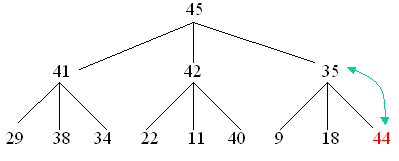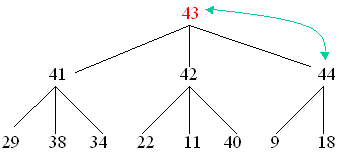

|
Heaps
An Introduction |
|
Prof. David Bernstein
|
| Computer Science Department |
| bernstdh@jmu.edu |



|
Heaps
An Introduction |
|
Prof. David Bernstein
|
| Computer Science Department |
| bernstdh@jmu.edu |







Suppose a node with value 44 is added to the end of the 3-heap above...



Suppose the value of the root node is changed to 43...






